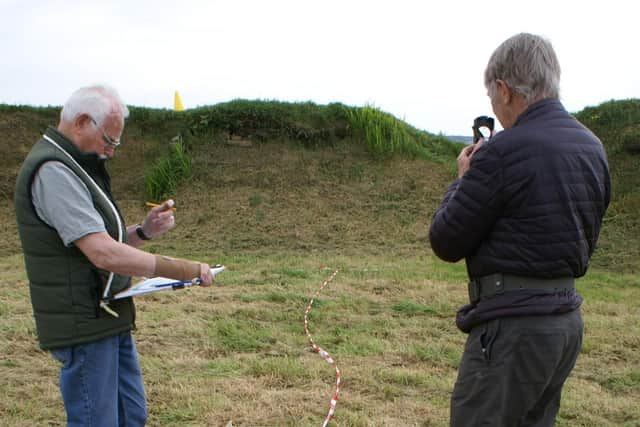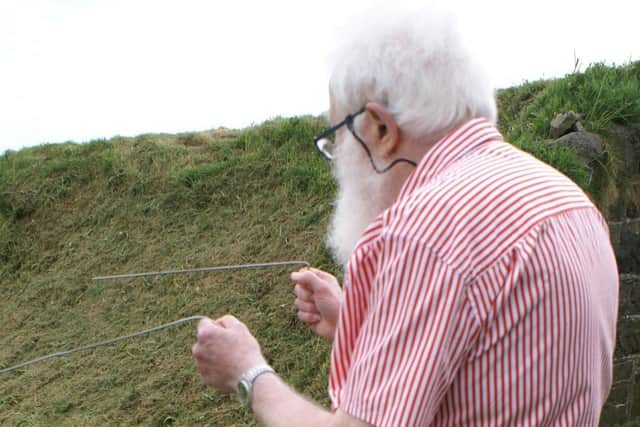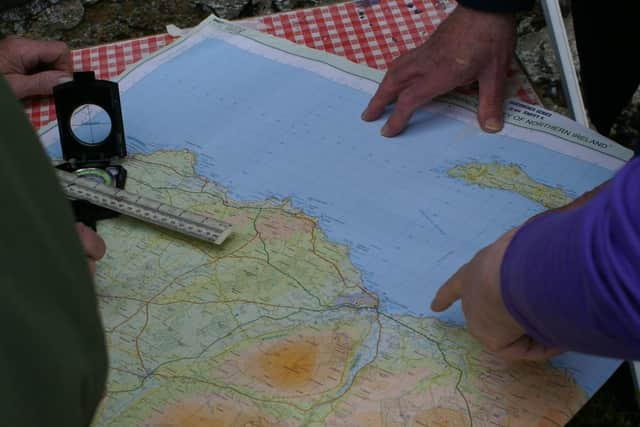Tracking the hidden historic lines across our landscape
and live on Freeview channel 276
He reckons ley lines “have always been a part of our planet, like the earth’s magnetic field” and when asked exactly what they are he admits, “I haven’t a clue. Energy? Yes, but not affected by electricity, magnetism, radioactivity, X-rays and the like.”
I can’t reveal the exact location of his demonstration “to preserve the important archaeological site” Brian insisted.
Advertisement
Hide AdAdvertisement
Hide AdHe’s allowing me to refer to it as “an earthworks on the north coast” and we’re back there again today, to continue reading between the ley lines.


An official notice at the site speculates that it was perhaps “an Iron Age passenger terminal at the end of some prehistoric track” - a tempting thought as the ancient name of an adjacent townland translates as ‘The Great Road’.
Whatever it is, was, or might have been, and to demonstrate the presence, or absence, of ley lines, Brian and 10 friends, helpers and spectators gathered on the large circular area of grass bounded by an inner and outer grass-covered mound.
Holding an ‘L’ shaped metal rod (‘dousing rod’) in each hand, parallel and pointing forwards, Brian walked slowly around the inner mound, with Jake Patterson plotting his progress on a sketch-plan of the earthworks. Brightly-coloured, strategically-placed plastic cones acted as visual reference points.
Advertisement
Hide AdAdvertisement
Hide AdSuddenly Brian’s pair of rods started moving, sometimes surging inwards and crossing over each other, or surging outwards, sideways. “It’s energy of some sort,” he explained, “and I’m doing nothing with my hands. The rods swing out for ley lines, and in for water.”


Jake Patterson marked the points on the plan where the rods swung sideways. “Okay everybody,” Brian announced, “we’ve done the circle once. We’re going to do it again, but at 22 feet nearer the middle.”
This is where last week’s account ended, with 15-year-old Joe Gormley measuring out the exact distance.
“Off we go!” said Brian. Immediately the rods swung inwards. “There we are!” Brian exclaimed.
Advertisement
Hide AdAdvertisement
Hide Ad“More water,” Jake confirmed, interrupted by Brian’s commentary “they’re moving outwards again. "They stay out like that for a few steps and they’re coming back together now! I’m doing nothing. Honestly, nothing, except tottering about!”


He's done this before “five times”, he confirmed, “and this always happens. The rods move in the same place. My theory is, these lines that I’m finding aren’t lines, they’re tracks. They’ve got width to them.”
They’ve got history too. “It all started with Alfred Watkins,” Brian explained. From Hereford, Watkins published a book in 1925 proposing “mysterious lines which cross the world and you can find them by studying maps which reveal mounds, churches, dolmens, standing stones etc all arranged along a straight path.”
Brian reckons Watkins’ theory is “slightly skewed” and prefers to imagine an ancient water diviner with a forked stick which sometimes “performed differently” - like Brian’s metal rods moving inwards for water and outwards at ley lines.
Advertisement
Hide AdAdvertisement
Hide AdSo the ancient diviner takes his forked stick around the countryside and discovers lines of specific points “converging on the very same place”, Brian muses, “which must be extremely important” so he builds an edifice! (Though the word ‘edifice’ probably wasn’t used in Neolithic times.)
With musings concluded Brian announced, “what we’re going to do now is mark the lines on the ground using coloured tape and then we’ll take a reading with a compass and see where the lines point to.”
Admitting to being “somewhat sceptical about ley lines” Dr Liam McCaughey, honorary secretary of the Belfast Naturalists’ Field Club, took a compass reading of 260 degrees. As well as Dr McCaughey and an experienced archaeologist, Brian’s guests included a photographer, caterers who provided a wonderful picnic and a delightful pet-dog called Buddy.
Aided by a map, ruler and compass, a collective conclusion was reached that the 260 degree ley line pointed just north of Ballycastle - intriguing, as the area is known for its castles, a friary, hilltop cairns, sea salt production and settlements of various periods. Edifices! And a last thought from Brian himself: “Ley lines existed in the world, right from when the world was made. And people built important structures on them - that’s my theory.”